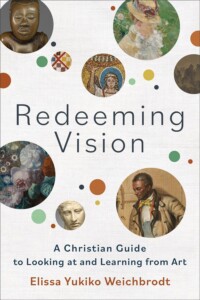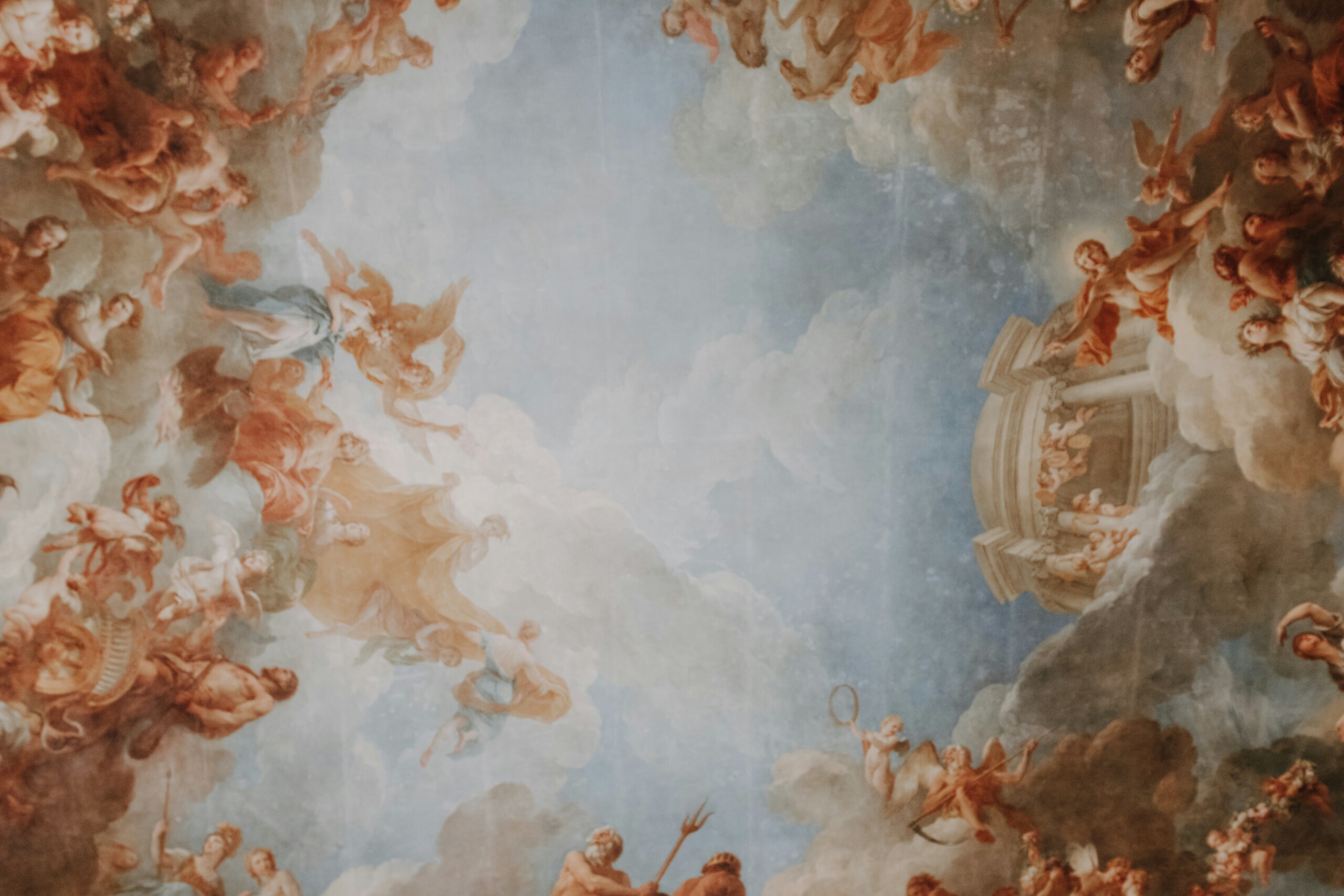
Redeeming Eyesight: A Christian Guideline to Hunting at and Understanding from Art
Elissa Yukiko Weichbrodt
Released by Baker Educational in 2023
272pp / $20.99 / 9781540965974
Redeeming Eyesight: A Christian Manual to Wanting at and Studying from Artwork delivers a important Christian framework to standard artwork vital follow. Elissa Yukiko Weichbrodt brings together an established framework, repeated themes, and a broad vary of examples, ensuing in information that is accessible to all readers, together with newbie art viewers. In her introduction, she proposes a framework which problems any Christian viewer of art to seem and imagine deeply about the material located within just a function as a indicates of personalized and cultural transformation. Weichbrodt argues that tradition can be formed through the intentional and process- ical processing of viewing and analyzing artwork as a result of “generative looking” (14). Taking cues from truths identified in Scripture, a viewer can experience private transformation via energetic searching, questioning, and thing to consider of tricky topics presented in a function of artwork. In a Christian increased schooling context this book introduces artwork criticism as a resource for non secular discipline—developing artists to get their on the lookout and creating severely. In an artwork appreciation class this book delivers latest and relatable themes, earning artwork criticism obtainable.
The ebook is broken into three various sections conveying the system of seeking at artwork to inform our really like of God and other individuals. Our definition of artwork and how the viewer interprets splendor right influences the way in which artwork is to be comprehended. In Section 1 Weichbrodt introduces the factors and ideas of artwork as a “toolbox” for recognizing, examining, and accessing art’s information (26-43). Soon after describing an artwork using a toolbox of visible communication, the viewer is prompted to refer to their “archive.” Weichbrodt utilizes the impression of an archive to motivate the reader to acknowledge their encounters and biases, framing the way artwork is understood (45-65). Last of all, Weichbrodt introduces the notion of a “frame” to recognize the function of art’s context (65-82). The context of a work’s presentation is conveyed as the ultimate tool to fully grasp the romance of the artwork to the viewer.
Weichbrodt spends the relaxation of her book demonstrating how viewing artwork can be an act of like for both equally God and humanity. Pieces 2 and 3 investigate principles delving into advanced narratives identified in Scripture—transcendence, worship, lament, and redemption. The e book versions the toolbox approach launched in Part 1 by deeply partaking a wide range of historical and modern artworks that examine modern problems and troubles. The textual content compares seemingly disparate artworks and themes forcing the reader to feel critically about the impression art has on the soul. For instance, in chapter six she references a hyper-practical work by Margareta Haverman, a loosely painted impressionistic piece by Berthe Morisot, and a quilt made by Rebecca Davis, to analyze how each individual artist captured a various element of God’s existence. This evaluation encourages the reader to ponder God’s vastness observed inside of the minute and daily times. The complexity of human mother nature is explored by way of the deep look at an artwork’s information. Weichbrodt encourages the reader not to reply with disillusionment, but to allow the viewing of artwork to be a device for the Holy Spirit to convict or motivate the heart. By hunting deeply at the complexities of the Fall, the reader is led to much better understand the depths of forgiveness.
Weichbrodt’s solution to the description and visual evaluation of an artwork is aligned with a historic technique to artwork criticism very first launched by Edmund Feldman in Types of Visual Expertise. Feldman, like Weichbrodt, prices the viewer to interact with prolonged on the lookout to acutely understand an artwork’s visual aspects before examination or interpretation. The things and ideas of artwork are the primary instruments for acquiring a visual language. Weichbrodt’s emphasis on the skill for artwork to have interaction considering from a one of a kind perspective is supported by the Visible Thinking Strategies job introduced by Undertaking Zero from the Harvard Graduate School of Education and learning. These tenets of art criticism have been greatly embedded within artwork instruction curricula proposed by Arthur Dow from the Getty Center for Instruction in the Arts. Although surely most K-12 public college students have been uncovered to the techniques described by Weichbrodt, the Christian intention is woven in the strategy, giving a new reason to these applications.
Weichbrodt’s tactic to context is an essential component of this text. The e-book recognizes visitors as full spiritual beings and encourages an embodied activation of the senses to comprehend an artwork. The viewer’s observations are knowledgeable by a unique “archive” or contextual encounter. These themes are emphasised not only in Part 1 of the textual content, but also inside of the quite a few thematic examples. Nevertheless she notes that a viewer’s reflection occurs within just a context, warning need to be taken to think about how significantly interpretation of a perform ought to be primarily based exclusively on one’s cultural ordeals. If viewing artwork is performed exclusively from one’s context, doing so ignores other significant contributing frameworks of understanding—historical, narrative, artist intent, and supposed viewers. These factors ought to not be forgotten when contemplating a work’s benefit. Weichbrodt spends some time very carefully presenting the historic narrative driving each and every of the works of artwork discussed. She presents substantial investigate from very first-hand accounts as effectively as broader historic records, permitting the reader to seem deeply into the complexity of messaging and intentions in every get the job done of art. The creator humbly recognizes existing gaps of information, not known owing to specifics shed to time. An artwork, she suggests, must act as a mirror to the specific to reflect on our very own heart condition. This presentation is a well balanced strategy to knowledge how viewing and talking about art can condition the viewer and impact the viewer’s perspectives on other difficulties. Weichbrodt skillfully designs how to assess art- works from unique time durations, produced from distinctive resources, for distinctive audiences to comprehend deeper truths about humanity’s connection to God. An illustration of this is her near search at idolatry in chapter four. Listed here the author potential customers the reader through a close research of a work by Piet Mondrian and a reference to Polykleitos’ representation of an idealized youth. Immediately after the visible investigation the author asks the reader to self-look at one’s individual idols.
Through the framework of toolbox, archive, and frame Weichbrodt introduces the reader to a extensive selection of serious-globe difficulties that can be confronted and mentioned via artwork. The illustrations she employs are assorted in both of those medium and written content. The author delivers leading queries for thought and dialogue all over the ebook. To encourage the reader to contemplate the implications of her model, she gives a backlink to a website that contains substantial-resolution images wherever the reader can utilize the introduced framework of Christian art criticism to other higher-resolution photographs. In general, the ebook provides a up to date model of art criticism from which Christian undergraduate students, art fans, or dabblers in the arts can spiritually reward.



